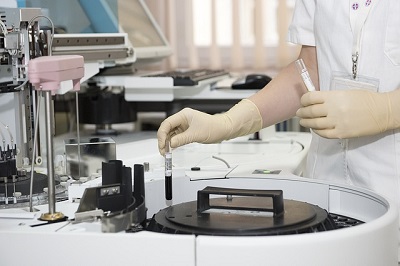Can Epididymitis Be Detected by Palpation?
The normal male epididymis is located at the head and dorsal side of the testis. The epididymis is divided into the head, body, and tail, and upon palpation, it can be felt as a crescent-shaped structure, with the head connected to the convoluted tubules of the testis.

After the testes produce sperm, they are stored in the epididymis, where the secretion of nourishing fluid within the epididymis promotes the gradual maturation of the sperm. Mature sperm are briefly stored in the epididymis before being transferred to the seminal vesicle through the vas deferens.
So, can epididymitis be detected by palpation?
Whether epididymitis can be detected through palpation depends on the specific circumstances. If the patient has a mild condition and does not exhibit discomfort, it might not be detectable. However, in more severe cases, where local abscess formation might occur, it can be detected through palpation.
1. Might Not Be Detectable: In the early stages of the disease, if patients show no significant clinical symptoms and only experience mild pain or tenderness, and if the duration of the illness is short, it might not be detectable at this time. It is advisable for patients to rest and avoid strenuous activities to prevent exacerbating the condition.
2. Detectable Through Palpation: If the patient does not receive timely treatment, allowing the disease to progress and cause symptoms like enlarged inguinal lymph nodes, high fever, and chills, then it can be checked through palpation, thereby facilitating a definitive diagnosis. In such cases, it's essential to follow medical advice and use antibiotics like Penicillin V Potassium tablets and Cefotaxime granules for anti-infection treatment.
Patients with epididymal tuberculosis are also prone to epididymitis, showing tuberculous changes. These patients may experience significant enlargement of the epididymis, beaded changes in the vas deferens, and tenderness in the testis and epididymis, with the testis also significantly enlarged. When a patient develops an epididymal spermatocele, a clear, nodular change can be felt upon palpation. The surface is smooth, the texture is relatively hard, and it usually does not accompany pain symptoms.
In addition to physical examination characteristics, patients can undergo several tests to confirm a diagnosis of epididymitis:
1. Imaging Tests: Imaging studies provide a direct view of local abnormalities. Ultrasonographic examinations can reveal increased blood circulation and enlargement of the epididymis in males, showing the range of inflammation. They can also detect involvement of surrounding tissues and organs like the spermatic cord and testis, which is very helpful for formulating treatment plans.
2. Laboratory Tests: As a urinary reproductive system disease, laboratory tests primarily focus on routine semen analysis. Analysis of semen can indicate if there are issues with the male reproductive system. Patients with epididymitis may also experience urethral discharge during urination, which can be tested with staining techniques. Generally, patients might also show elevated peripheral blood leukocytes in blood tests.
Epididymitis can not only cause enlargement of the male scrotum, testis, and epididymis, leading to other urinary reproductive infections, but it can also lead to male infertility and sexual dysfunction. These issues have a significant adverse impact on a man's daily life and mental and physical health. Therefore, men experiencing symptoms suggestive of epididymitis should seek timely examination and treatment at a reputable hospital.
In cases of bacterial epididymitis, patients need to be treated with antibiotics. If the bacterial infection is caused by a sexually transmitted disease, then sexual partners also need to be treated. Patients should complete the entire course of antibiotics prescribed by the doctor, even if symptoms disappear.
For chronic epididymitis, traditional Chinese medicine such as Diuretic and Anti-inflammatory Pill can eliminate pain and various discomfort symptoms with their heat-clearing, detoxifying, blood-activating, and stasis-eliminating effects. Moreover, being a purely herbal formulation, it does not have adverse effects on the body while treating the disease.
Additionally, in daily life, patients should maintain good personal hygiene, frequently change and sun-dry their underwear. They should also adjust their diet to be lighter, consume more fresh fruits and vegetables, and avoid spicy and stimulating foods, such as hot pot and spicy noodles, to facilitate recovery from the condition.
You may also be interested in:
Epididymitis Patients Look Here: These Foods Can Help Ease Your Pain!
Is it Hard to Cure Epididymitis Caused by Trauma?
4 Methods of Traditional Chinese Medicine(TCM) for Epididymitis



